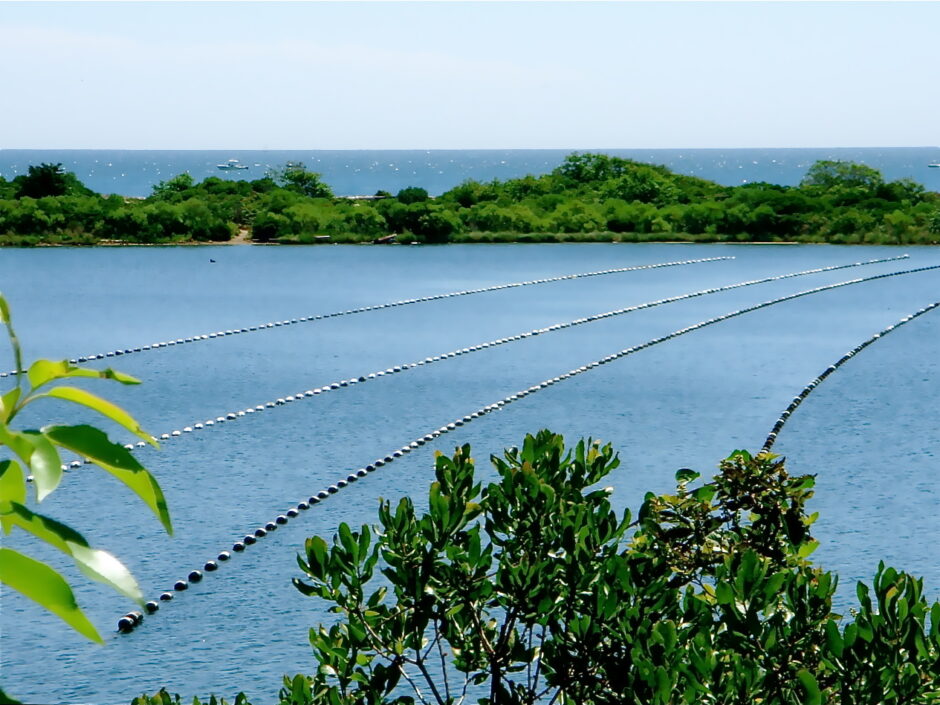Designing an Observational Early Warning System for Aquaculture

Oyster Net Buoys. (Credit: L'eau Bleue via Flickr CC BY-SA 2.0)
Marine aquaculture operations require close environmental monitoring to ensure the farmed species remains healthy. Because ocean conditions can change quickly, continuous monitoring and the creation of a targeted early warning system can help protect aquaculture farms and their products.
Monitoring key measurements like temperature, dissolved oxygen, climate, and wave/current can help keep operators informed.
The Need for Early Warning Systems in Aquaculture
Water temperature is foundational to habitat suitability for a species. Preferences can vary from species to species, so acceptable temperature ranges must be considered for the needs of the farmed fish. Temperature spikes or drops outside of this range can lead to death or disease, so operators will need to respond quickly when alerted.
Similarly, dissolved oxygen is necessary to sustain aquatic life and can fluctuate due to a variety of factors relating to other water quality conditions or unsustainable operations. For example, large numbers of fish crammed into one pen can lead to overconsumption of dissolved oxygen, resulting in hypoxia.
Hydrological conditions like strong currents or high waves can damage net pens or other aquaculture structures, leading to accidental releases and product losses. Climate conditions like rainfall, strong winds, and extreme temperatures (heat or freezing) can impact water quality and operations.
For example, unsafe weather or water conditions can limit traditional discrete sampling efforts, and, if not supplemented by a real-time monitoring system, operators will have no way of monitoring conditions. Additionally, extreme events can damage aquaculture structures.
Designing an Early Warning System
In order to mitigate these issues and minimize impacts, an early warning system can help monitor water temperature, dissolved oxygen, hydrology, and other parameters.
When equipped with a telemetric data logger and web datacenter like WQData LIVE, operators can establish minimum and maximum thresholds that alert users of unsafe conditions. Once notified, managers can respond quickly and minimize losses.
In open-water aquaculture settings, water quality can take longer to recover compared to closed tanks or ponds, so an early warning system allows managers to get ahead of complications. In ponds or tank aquaculture settings, an early warning system can be used to mitigate the onset of unsafe water quality conditions.
Developing a better understanding of current and climate conditions can inform the construction of future pens, as nothing can be done once they have begun, according to the Global Seafood Alliance.
Conclusion
Early warning systems benefit individual farms but can also help shape the aquaculture industry. Data can be shared with investors, consumers, and other farms in the area, all of which support farm growth and improvements.
Aquaculture is considered to be a key component of meeting future food security needs—and sharing data to help develop better practices and working together to innovate the field is necessary for advancing aquaculture.


0 comments